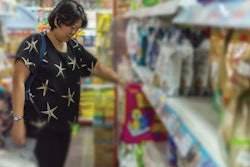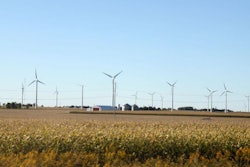
“Are pet adoptions really skyrocketing?” That’s the headline of a recent blog post on the American Veterinary Medical Association (AVMA) website – and indeed, it’s a pertinent question that seems to be on many minds, because the answer may have implications for current and future prospects for the pet food, pet product and service markets.
I asked it myself recently, and even of myself, because I had previously bought into “all the COVID-19 adoption hype,” as characterized by Bryan Jaffe, managing director of Cascadia Capital, in his “Pet Industry Overview: Fall 2020” report.
“One of the feel-good media stories of the pandemic is the number of pets who have found full-time or temporary homes since shelter-in-place was implemented,” Jaffe wrote. “This has been linked to rising pet ownership and, in turn, a current and future growth accelerant for the industry. While it is natural, in challenging times, to gravitate to things that make us feel good about ourselves personally or as a society, the quantitative support for this conclusion is not well evidenced.”
The unknown: DIY pet adoptions
Jaffe’s use of the phrase “not well evidenced” is interesting, and perhaps a perfect description, in that data on recent pet adoptions is difficult to decipher and compile. He cited data from PetPoint, sourced from 1,200 animal welfare organizations across the U.S., indicating pet adoptions have decreased 25% year-over-year, which has been somewhat offset by an increase of 8% in fostering pets. He added that intakes of animals into shelters in Texas, Florida and California, “three of the largest intake/outcome states,” are down 30% to 35%. “While it is certainly the case that private sales and adoptions factor into the equation, it is not sufficient to bridge the gap.”
Ah, but that “private sales and adoptions factor” could be key. What we don’t know is how many of the pets people are claiming to take in this year – a new “Pets in a Pandemic” report from Mars Petcare’s Better Cities for Pets program showed 30% of consumers surveyed welcomed a new pet this year – have come from sources other than shelters and animal adoption agencies. One industry contact referred to it as “DIY pet adoption/finding homes for pets” among existing pet owners and pet lovers.
For all we know, the pandemic and its forcing us to stay at home may be keeping more people away from shelters, whether to seek adoptable pets or turn in stray or rescued ones.
Veterinary practices are busy now
The AVMA blog post included data that may shed some light on this adoption scenario. It cites figures from 24PetWatch and Best Friends Animal Sanctuary showing that the rate of adoption – adoptions as a percentage of the animals taken into shelters – has indeed increased this year to 58.36%, up from 51.49% in 2019. That may be a more useful metric to watch, along with this: animal intakes have fallen more than 35% this year (matching up with the PetPoint data shared by Jaffe). The net result is that adoptions are down 26.67%.
So, it could be that the adoption hype actually stems from the adoption rate, rather than the number of animals adopted – at least from shelters. Meanwhile, possibly relevant to private/DIY adoptions happening, the AVMA blog presented data from VitusVet indicating a rise in both the average number of pets and pet owner visits per veterinary practice per week.
“While these numbers dipped early in the pandemic, the number of pets being seen by veterinary practices has increased significantly since late March,” AVMA said. “In fact, the average number of new pets per practice rose from 23 per week in March to 36 in August – an increase of more than 50%. Veterinary practices are busy places right now, and one big reason is that veterinarians are seeing more new patients and new clients.”
The bottom line: still unclear
Regardless of where the new pets are coming from, it is a fact that many veterinarians, pet food and product companies are experiencing business growth to date in 2020. Mintel projects the overall U.S. pet industry to reach US$102.2 billion this year, representing growth of 5% over 2019. The pet food segment will end up 7% over last year, and pet supplies, 6%, according to a Mintel press release.
That’s not to ignore warning signs as the pandemic rages on and many people’s financial situations continue to worsen. The Mars/Better Cities for Pets report showed 61% of pet owners feeling concerned about paying their pet-related expenses; 20% have considered giving up their pets, and sadly, 13% actually have relinquished pets year to date.
So, the pet adoption picture and its effect on the market seem likely to remain a little murky and tricky to nail down for a while – somewhat mirroring life itself right now.
View our continuing coverage of the coronavirus/COVID-19 pandemic.


















